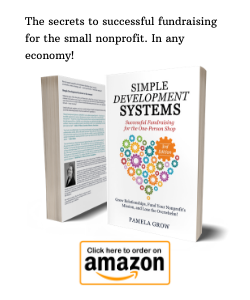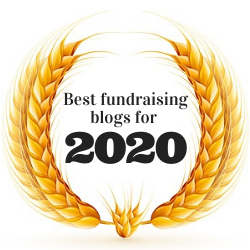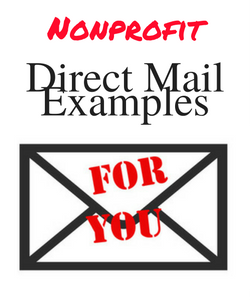
With the growth of artificial intelligence (AI), it’s important to maintain a human touch in your communications. Donors want to contribute to causes backed by real people who make a real impact on society.
In your quest to improve your donation solicitation strategy, you may find tips from nonprofit blogs, videos, newsletters, and countless other sources, but do you ever wonder where these strategies come from?
Understanding the psychological basis of giving helps you develop fundraising strategies that tap into the heart of what it means to be human. So long as human behavior persists, these principles won’t go out of style, allowing you to craft an evergreen approach to engaging donors and garnering their support. We’ll walk through several psychology-based reasons that explain why people give and provide strategies to make the most of these motivations.
Why People Give: Explained
Egoistic Altruism
While you might consider donating to be a purely altruistic or selfless act, egoistic altruism is the idea that people give in part to serve others and in part to serve their own interests. Referred to as the “warm glow effect” or “warm glow giving,” people feel good when they do the right thing—in this case, donating—and that positive feeling is what motivates them to give.
When people give, the body experiences what researchers have dubbed the “helper’s high”; donating activates reward systems in the brain, having a similar effect to other stimuli like food and money. Over time, this “helper’s high” can lead to better health and increased longevity.
How to Inspire Donors to Give
- Focus on the feelings associated with donating. While impact data proves the tangible benefit of giving to your cause, describing how donating will make donors feel allows you to capitalize on egoistic altruism. For example, in their fundraising appeals, an animal shelter may use language like, “Feel proud knowing you helped dozens of animals find happy homes.”
- Thank donors immediately. The quicker you thank donors, the quicker they receive that “high” from giving. Thank donors within 24 to 48 hours so they can experience that warm glow feeling as soon as possible and feel enticed to continue giving.
- Follow up on donors’ contributions. Provide program and campaign updates that highlight donors’ impact, extending those positive feelings even after the immediate giving period. Use “you” and “your” to emphasize how donors’ contributions made your work possible.
Personal Identity Expression
Some donors give to express their identities through their actions. Field experiments run by the American Red Cross reveal that “appeals that prime an individual’s identity as a previous donor to the charity or as a member of a local community generate more donations.”
Further, a study by researchers Jacqueline R. Rifkin, Katherine M. Du, and Jonah Berger found that “small prosocial gifts, such as tips or small donations, can be encouraged by framing the act of giving as an opportunity to express identity-relevant preferences—even if such preferences are not explicitly related to prosociality or the organization in need.”
How to Inspire Donors to Give
- Prime identity. Segment your appeals and speak directly to donors’ relationships with your nonprofit. For example, you may create a segment for long-time supporters and start your appeals with a statement like, “As someone who has given to our organization for over a decade, you’ve made a significant impact on our community over the years.”
- Use aspirational language. Signal to donors who they’ll become after supporting your mission, shifting the focus to their identity rather than your nonprofit’s work. Instead of ending your next text-to-give campaign messages with a call-to-action (CTA) like “Support our cause,” try something like, “Become a patron of the arts.”
- Experiment with dueling preferences. The second study referenced above identifies situations where organizations offered “dueling preferences” that present giving as a choice between two options. This approach encourages donations by providing donors with an additional chance to express themselves during the process. For example, the study cites a campaign from the American Society for the Prevention of Cruelty to Animals that asked people to donate money as a way to vote for whether they prefer cats or dogs.
Identifiable Victim Effect
The “identifiable victim effect” refers to the phenomenon where people are more likely to offer greater assistance to one identifiable person or animal in need than to an anonymous group.
Studies on the identifiable victim effect reveal that when analyzing anonymous victims, there is heightened activity in the bilateral temporoparietal junction (TPJ), a brain area related to value judgment. This phenomenon suggests that it takes more effort to understand anonymous victims’ emotions and needs, making it harder to empathize with them.
How to Inspire Donors to Give
- Use specific stories. Help donors connect with your cause by telling your beneficiaries’ stories. Interview people you’ve helped, and include their quotes in your appeals, social media posts, and newsletter. You may also spotlight beneficiaries you’re trying to help and how donors’ support can assist them. For example, if your organization provides disaster relief, you may tell the story of a family that recently lost their home to an earthquake and explain how donors’ contributions will help them rebuild.
- Leverage visual storytelling. Make your stories even more vivid and compelling with visual elements. For instance, Bloomerang’s donation page guide recommends that you “Choose just one compelling hero image to include in your giving form to remind donors who they will help through their gifts.” Consider conducting A/B testing to see which stories and visuals resonate most with your audience.
Principle of Reciprocity
After receiving something of value, people feel compelled to give back. The “principle of reciprocity” is the social psychology term for “paying it forward.” People whom your cause has helped, such as alumni, former beneficiaries, or families and friends of former beneficiaries, may feel particularly compelled to give back to your organization.
How to Inspire Donors to Give
- Acknowledge past benefits that supporters have received. Consult your nonprofit CRM to find people with a personal connection to your cause. For example, you may send an appeal to fund your mentorship program to former mentees, asking them to help young adults have the same life-changing experience they did.
- Send donor recognition gifts. By giving donors small tokens of appreciation, they’ll feel incentivized to continue giving to your nonprofit. Consider sending donors gifts like branded t-shirts, mugs, and tote bags.
Building relationships with donors requires understanding who they are at their core. Go beyond demographics by integrating these psychological principles into your fundraising approach. Measure which tactics are most effective for your audience, and continue incorporating them into your strategy.


















 I can’t wait to meet with you personally.
I can’t wait to meet with you personally.
Comments on this entry are closed.